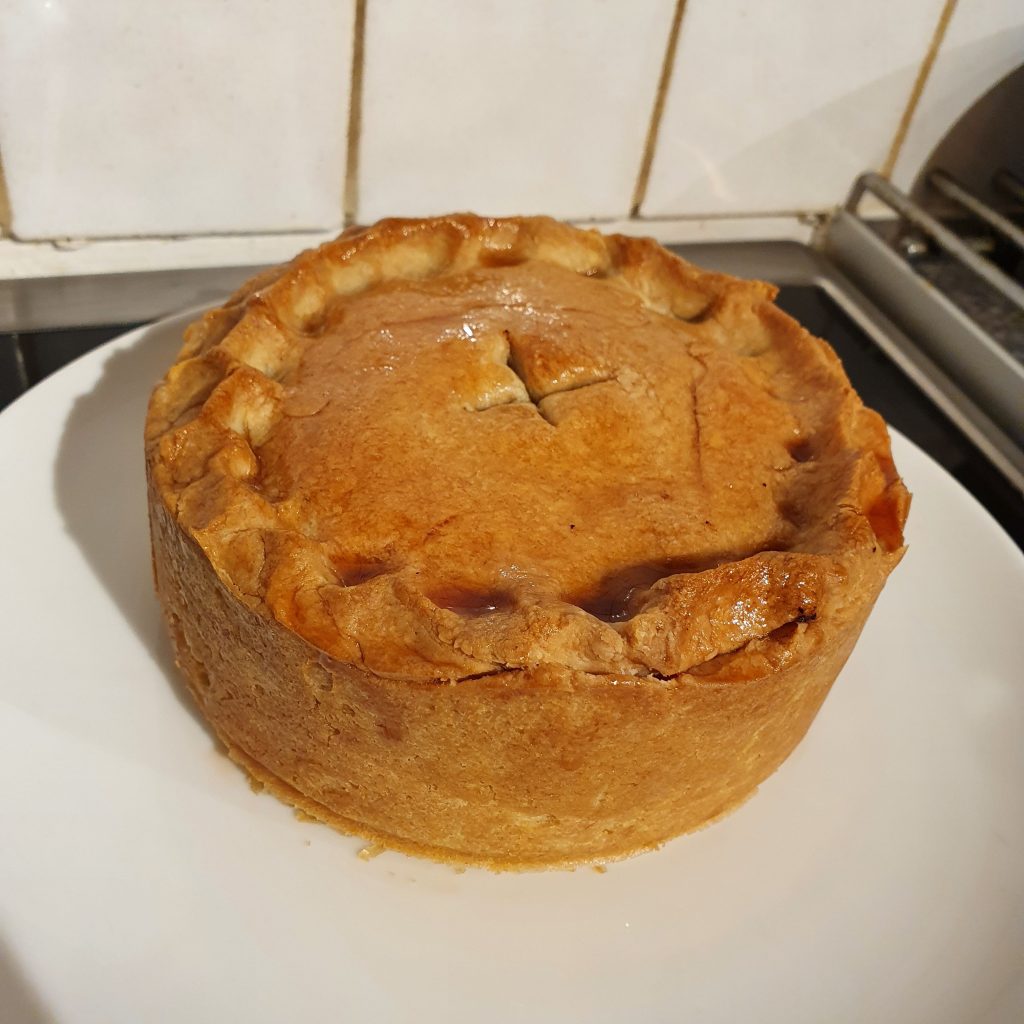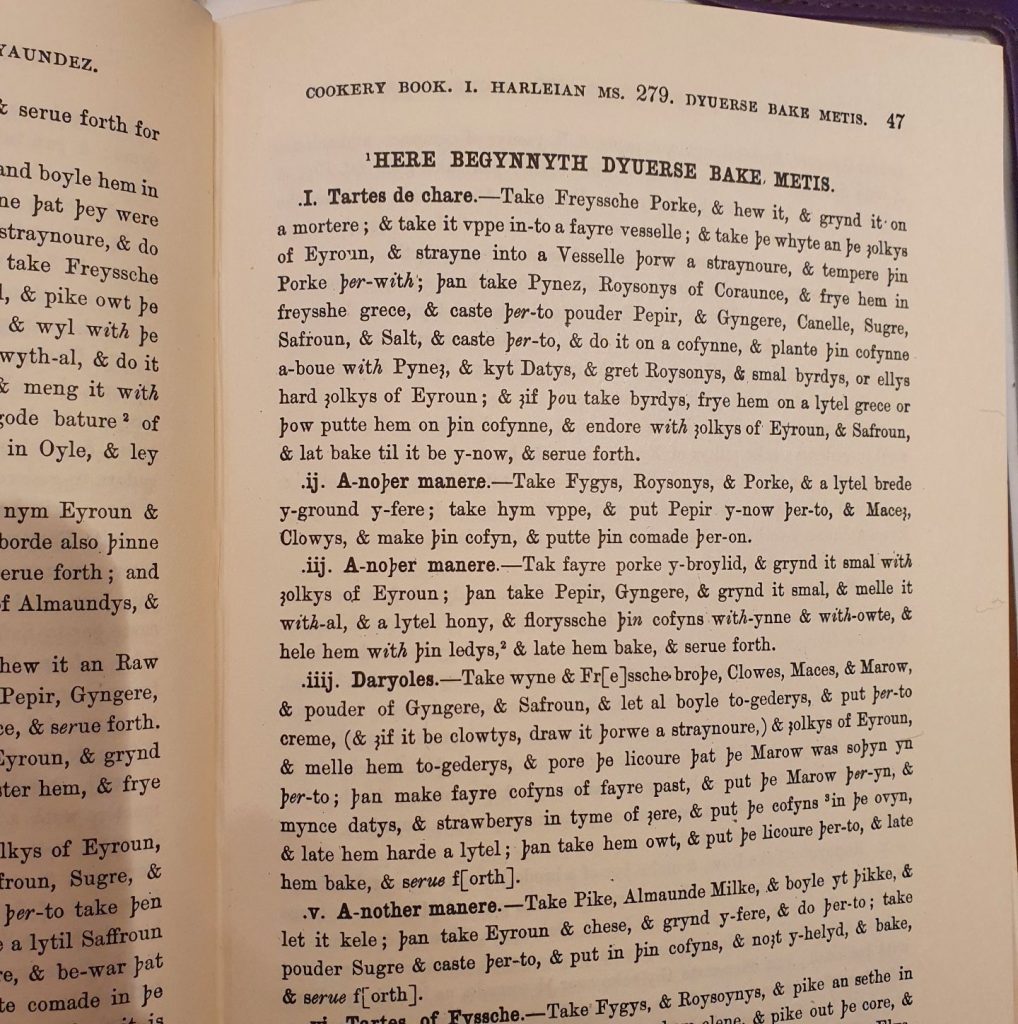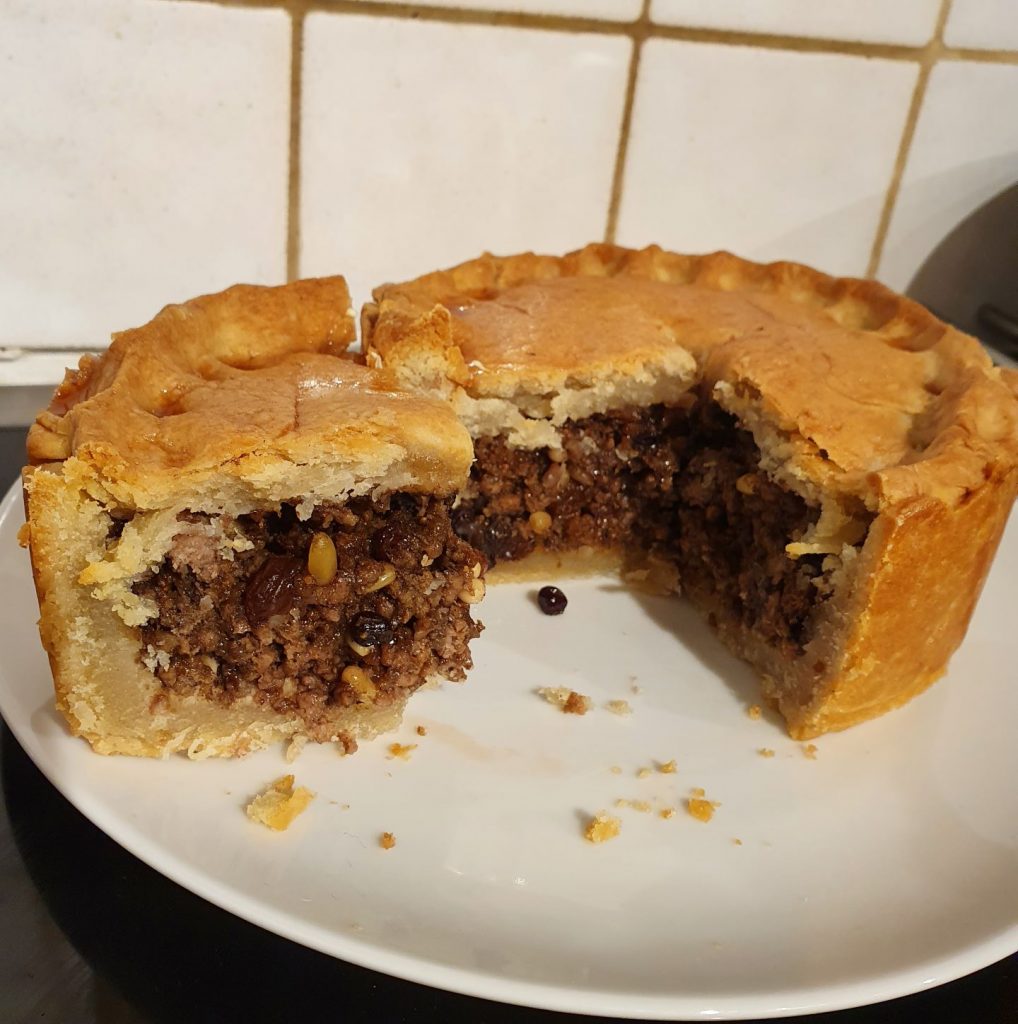The past few years I have become increasingly interested in historical cooking. So much so that my husband bought an original 18th century cook book for me for a Birthday a few years ago (and spend an obscene amount of money to purchase it). In particular mediaeval and Tudor cookery has particularly interested me. And so hence this weekend I decided that it was only right and proper that I recreated a Tudor mince pie as it is advent.

Modern mince pies lost their meat only about 150 years ago and until that time were a combination of minced meat, dried fruit and spices contained in a pastry container. The combination of sweet and savoury may be unusual to our tastes but it really shouldn’t be – it is still common in Asian and Persian cookery. Personally, I love the combination as long as the sweet doesn’t over power and in this pie it doesn’t.
Spices have long been associated with celebration, originally because they were so exotic and expensive. They were worth more than their weight in gold. Saffron is the typical example of this, though I left it out of this pie firstly as I didn’t have it and secondarily I don’t like the flavour, because the golden glow it gives is reminiscent of actual gold.
The pastry case used to be called a coffin (cofynne) and until recent centuries was only a vessel to hold the fillings and not made to be eaten, though perhaps they were recycled by the house staff for their meals or given to the needy as alms. I have used a hot-water crust pastry as per this recipe on the English Heritage website – it might not be be entirely authentic but I wanted to try making it (for the first time) and have a pie at the end that we could eat for dinner, pastry and all.
My other source of information was a 15th century cookbook, a reprint which I picked up in the charity shop (Harleian MSS 279). Reading the text requires some deciphering as it is a mixture of old English, French and Latin but it is written phonetically so can be worked out.

Mynce Pyes in 15th Century style
- 750g minced beef or veal (mutton is traditional too)
- 100g beef suet
- 50g currants
- 50g sultanas or raisins (roysonys of coruance – raisins or currants)
- 100g dried figs, finely chopped (fygys) – could use dates instead
- 50g prunes finely chopped
- 50g pine nuts (pynez)
- Spices – 1 tsp ground ginger, half a tsp cinnamon, half tsp ground pepper, 1 tsp brown sugar, quarter tsp ground cloves. Recipes often call for mace and saffron but I had neither. You can also add rose water or orange blossom water.
- 1 tsp salt
For the pastry (I made double this amount and it was more than enough to make two 15cm diameter pies, the English Heritage recipe says this amount is suitable for a 20cm diameter tin).
- 450g plain flour
- 1 tsp salt
- 100g lard
- 60ml milk
- 150ml water
Fry the mince and break up any lumps, put in a bowl and add the other filling ingredients and mix well. Mine looked a little dry so I added a little beer.
To make the pastry, heat the lard, milk and water in a pan until the lard is melted and then bring to the boil. Then pour over the flour and salt and beat well with a wooden spoon before giving a knead to ensure it is smooth. Leave about one quarter of the dough to the side to form the lid. Press the dough into the tin to form base and sides.
Sprinkle some ground almonds on the pastry case base to absorb excess liquid then pack in the filling – it needs to be packed fairly densely. Roll the remaining dough to make a lid. Moisten the top of the dough walls with water then place on the lid and squeeze closed with fingers and thumb. Cut a couple of slits in the lid to allow steam to escape.
Cook at 200C fan oven for 15 minutes then turn the oven down to 160C fan and cook for a further 1 and a half hours. Check the interior is cooked with a thermometer (needs to be over 80C). Allow to cook before unmolding. Serve hot, warm or cold. I glazed the outside of the pye with melted medlar jelly to give it a nice glossy sheen.
@EnglishHeritage

